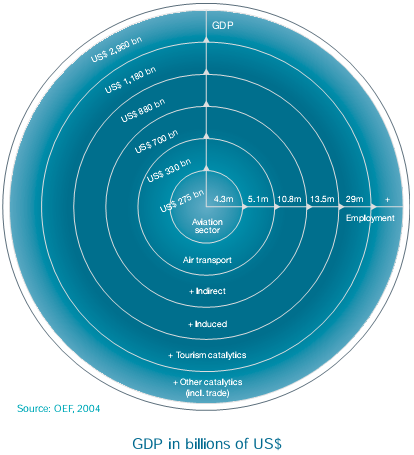Long ago I took an IATA survey to relieve the boredom of a long layover. Ever since, I’ve been on their mailing list, and received “invitations” to take additional surveys. Sometimes I do, out of curiosity – it’s fun to try to infer what they’re really after. The latest is a “Global Survey on Aviation and Environment” so I couldn’t resist. After a few introductory questions, we get to the meat:
History/Fact
1. Air transport contributes 8% to the global economy and supports employment for 32 million people. But, aviation is responsible for only 2% of global CO2 emissions.
Wow … an energy intensive sector that somehow manages to be less carbon intensive than the economy in general? Sounds too good to be true. Unfortunately, it is. The illusion of massive scale of the air transport sector is achieved by including indirect activity, i.e. taking credit for what other sectors produce when it might involve air transport. Federal cost-benefit accounting practices generally banish the use of such multiplier effects, with good reason. According to an ATAG report hosted by IATA, the indirect effects make up the bulk of activity claimed above. ATAG peels the onion for us:

So, direct air transport is closer to 1% of GDP. Comparing direct GDP of 1% to direct emissions of 2% no longer looks favorable, though – especially when you consider that air transport has other warming effects (contrails, non-CO2 GHG emissions) that might double or triple its climate impact. The IPCC Aviation and the Global Atmosphere report, for example, places aviation at about 2% of fossil fuel use, and about 4% of total radiative forcing. If IATA wants to count indirect GDP and employment, fine with me, but then they need to count indirect emissions on the same basis. Continue reading “Surveys and Quizzes as Propaganda”


